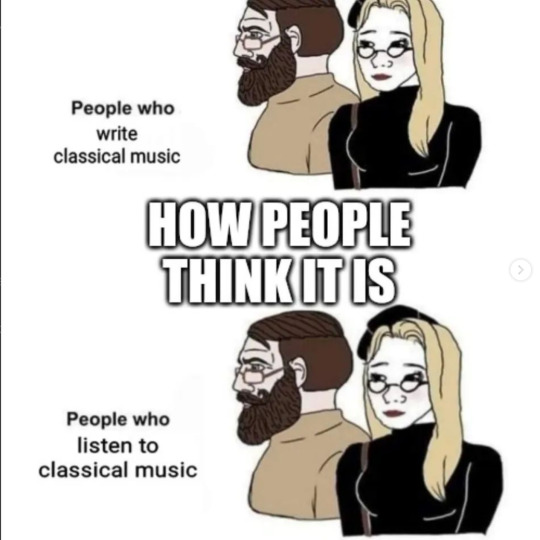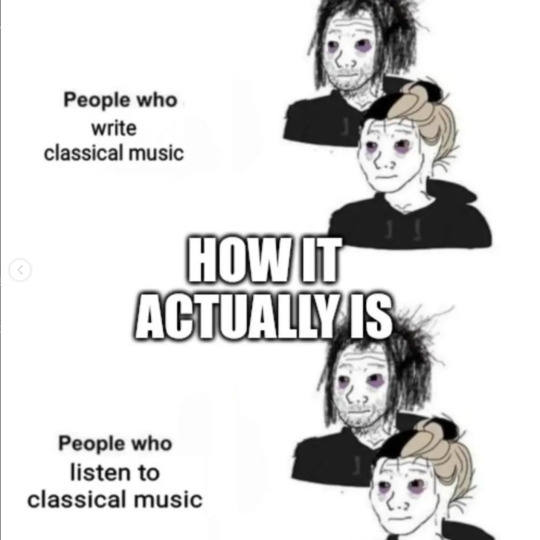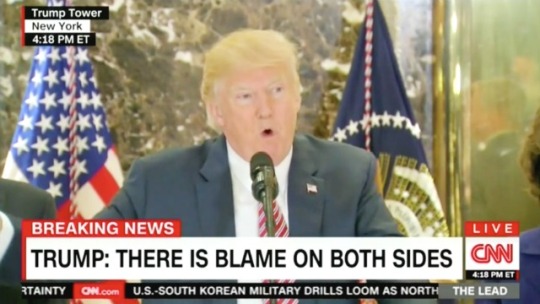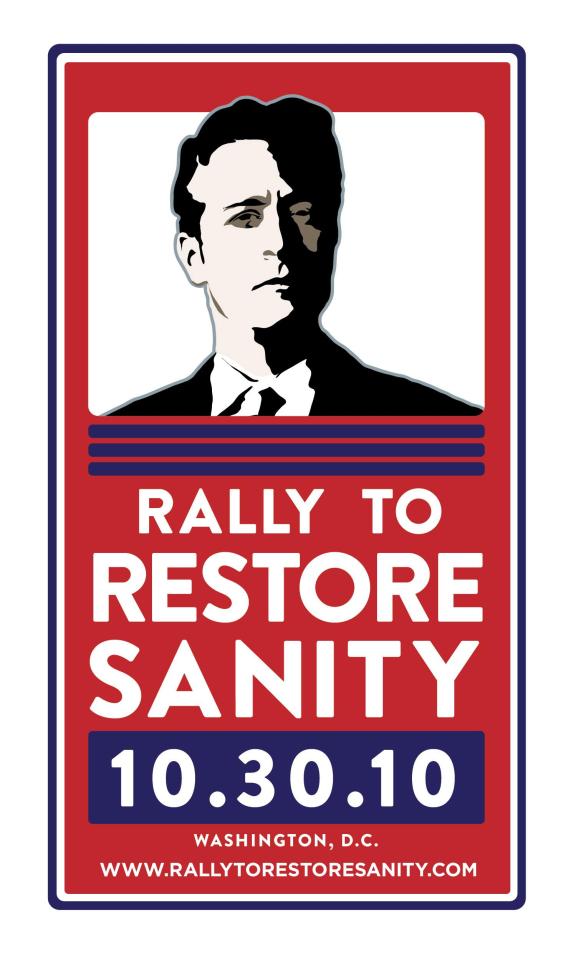#one of the funniest things is that there's this myth circulating around
Explore tagged Tumblr posts
Text


Meme by @friedevd4c on Instagram
This is so true... people often think of classical music as some rich ppl stuff, but in fact most composers were broke af lmao (and mentally ill)
#one of the funniest things is that there's this myth circulating around#that rachmaninoff composed his prelude in c sharp minor bc of a nightmare he had#and like#he had to explicitely say that this rumor waa false#and he explained#that he was so broke at the time#he composed this prelude bc he needed money $$$#and the thing is he didn't have that much for it at the time#but later on the prelude got so popular#but he had no copyright over it#and got no money from that#which by that time was fine bc he made himself so much money that he was experiencing “embarassment of riches”#and donated his money a lot#but it must have been maddening to know it got popular after the time you REALLY needed the money bc you couldn't buy a coat#and were ALREADY dealing with mental health issues#but yeah#and this goes for many composer like mozart who died with plenty of debts or chopin who died broke#or wagner who kept exploiting liszt's money lol#bc liszt go rich by himself like rach#bc he was raised in a farm#anyways yeah#respect#stop with this stupid stereotype like 🙄🙄#it literally makes classical music less accessible smh#rant over ig LOL
26 notes
·
View notes
Text
“Both Sides”
youtube
Pocahontas is a controversial Disney film. It’s not hard to see why. In its attempt to tell a story of a historical Native American figure, especially one alive during the beginnings of European colonization of the Americas, it ended up reinforcing a lot of Native American stereotypes and myths about colonization. For the sake of this post, I’m only going to address one of the sources of backlash towards Pocahontas. Which brings me to the song above, “Savages”.
The way in which Pocahontas chose to portray English/Native American relations was to compare their tension to the Capulets and Montegues from Romeo & Juliet, with John Smith and Pocahontas standing in as the eponymous characters whose love can help both sides grow past their animus towards one another. This framing is very kum-ba-yah “can’t we all just get along” in its intent, but it’s dishonest. It wouldn’t have been dishonest if, let’s say if the conflict between the two warring families in the story began with the Capulets claiming the Montegues’ property and resources as their own and spent the next several centuries removing the Montegues from their property through pillage, rape, and genocide.
In telling any story about Native American history, especially if your story takes place during the first European settlements of the US, and especially if you’re a non-Native American telling the story, the reality of colonialism cannot be ignored or soft-pedaled. Unfortunately, the song “Savages” and Pocahontas in general mostly frames the Native Americans and English settlers on equal footing. This isn’t to say that systems of colonialism didn’t or couldn’t bring about comparable individualized prejudice both Pocahontas’ Powhatan tribe and John Smith’s fellow settlers showed towards one another, but those feelings are the manifestations of living under a system based on inequality.
However, if you take a look at comment section of that “Savages” video, most of the comments proudly say “yeah, both sides are evil”, “both sides are bad”, etc. (along with a bunch of other obnoxious right-wing buzzwords like “SJW”, “PC police” or “T R I G G E R E D”)
Which finally brings me to that damned “well, both sides are bad” political talking point.

In the wake of the white supremacist violence in Charlottesville, VA that left numerous people injured and one person killed, President Donald Trump has been roundly and rightfully criticized on all sides for equating one side of protesters marching in support of Nazism, racism, xenophobia, antisemitism, homophobia, etc. and the other side of protesters marching against Nazism, racism, xenophobia, antisemitism, homophobia, etc. in his statements about the tragedy over there. This type of stance of not really having a stance is not a new angle and it certainly isn’t an angle that someone who usually revels in being polarizing like Donald Trump invented.
If there is a contentious issue being debated, it is always a good idea to get a firm grasp of the arguments on each side and understanding all the nuances of each side. With all those nuances in mind, it’s perfectly fair to have disagreements or misgivings about aspects of each side. However, the “both sides are bad” view never actually does any of that. It’s a very lazy and extremely reductive way of viewing the issues that only serves to self-righteously provide a veneer for sitting on the fence that forgoes giving either side any further thought or analysis by reducing them to strawmen. Another version of this is the reflexive “well, one side says this, one side says that, so the answer must be somewhere in the middle”. The South Park episode “Chef Goes Nanners” mocked this type of thinking when various townspeople would only flaky, indecisive answers when asked by news reporters whether or not their town flag is racist.
The funniest thing about South Park criticizing that way of thinking is that this show has been the biggest purveyor of this exact type of lazy “well, both sides are bad” thinking. Their episode “Goobacks” more literally does this than any other episode by hosting a debate between two characters literally named “pissed-off white trash redneck conservative” and “aging hippie liberal douche”.
The other thing about the “both sides are bad” point of view is that while it prides itself on being even-handed and taking the middle road, it very often doesn’t even do that. More often than not, it simply takes a “softer” conservative point of view. Another South Park episode “I’m a Little Bit Country”, which centered around the debate over whether or not the US should invade Iraq, settled the conflict between the pro-war side and anti-war side by arguing “only a truly great country can go to war and act like it doesn’t want to”. What the fuck does that mean? First of all, I have to outline the way this episode defined both sides. The pro-war side was defined as “we have to go to war cuz terrorists and 9/11” and the anti-war side was defined as “we should not go to war cuz war is violent and icky”. The “middle-ground” argument that united both sides amounted to arguing that the US should go to war in order to maintain its powerful geopolitical status in the world, but the image of a robust anti-war populace makes the US look a lot less barbarous to the rest of world. This completely ignores all of the other arguments made against invading Iraq, such as the Bush Administration’s false claim of Saddam Hussein having weapons of mass destruction and the Administration’s disingenuous connecting of Hussein to the attacks on the World Trade Center (and these are just two of the counter-arguments brought against invading Iraq).
I’ll stop beating up on South Park for a moment.

Jon Stewart’s 2010 Rally to Restore Sanity was one great big exercise of “both sides are bad, the answer’s gotta be somewhere in the middle”. Besides taking a dig at Glenn Beck’s 9/12 rallies, Stewart mentioned in interviews that he organized this rally to fight against what he saw was a growing extremism on both sides. This was during a time when the Tea Party movement was on the rise, Glenn Beck’s show on Fox News was a ratings giant, and at the heels of a massive Republican sweep on the upcoming midterm elections. This was during a time when debates about Obama’s healthcare reform were characterized by one side arguing that a widely available public program would give private health insurance companies an incentive to reduce their costs and the other side arguing that Obama is a socialist attempting to implement a Nazi policy with “death panels” that will “pull the plug on grandma”. The response to this growing movement on the right by the Obama Administration was to adopt a healthcare plan formulated by the right-wing think-tank the Heritage Foundation (implemented by his future presidential opponent Mitt Romney in Massachusetts when he was governor) as his healthcare reform, to greatly reduce the government branch that tracked the activity of white supremacist hate groups while membership of these groups were on the rise, and to assist in defunding ACORN and firing US Department of Agriculture director Shirley Sherrod after doctored videos of both falsely incriminating them of wrongdoing circulated around right-wing media. This is all extremism that clearly skews on one side. The only example Stewart could bring up of “liberal extremism” was CNN’s firing of news anchor Rick Sanchez after he made veiled antisemitic remarks about Stewart (and how is that liberal extremism?). I think Jon Stewart did such a disservice to his audience by rallying thousands of them for something based on a false premise. His snide, dismissive coverage of the Occupy movement the following year further reinforced his adherence to false “both sides” paradigms by framing the Occupy protesters in similar “ha ha look how stoopid and ridiculous these people are” as their coverage of Tea Party protesters.
Which brings me to one of the major tenants of “both sides are bad” ideology, the horseshoe theory. This theory equates the left with the right without a shred of nuance or any actual thought whatsoever. In President Trump’s clusterfuck-of-a-press conference where he doubled down on equally blaming both sides for the violence in Charlottesville, he place a chunk of the blame of what happened there on what he called the “alt-left”. “Alt-left” is a new-ish slur used to discredit the left-wingers, particularly activists inspired by Bernie Sanders’ 2016 presidential run, by giving them a moniker similar to “alt-right”, which was just a way of rebranding all of the things like white supremacists like the ones who committed violence in Charlottesville stand for as something deceptively softer than calling it what it really is. This term “alt-left” has been used quite a bit over the past year by right-wing pundits like Sean Hannity and powerful Democratic party insiders and surrogates like MSNBC’s Joy Ann Reid, Center for American Progress president Neera Tanden, and Daily Kos founder Markos Moulitsas. Many who throw terms like “alt-left” around, particularly those invested in the Democratic party, have in the past justified their use of such terms by expressing agreement with the horseshoe theory. Both the alt-right and so-called “alt-left” are allegedly so extreme that they’ve become identical to one another, and Trump and Bernie Sanders are the respective poster boys for these extreme ideologies. This is a comparison between a cult of personality who finds absolute kinship with neo-Nazis and Ku Klux Klan members and a cult of personality whose politics is more comparable to Lyndon Johnson, Harry Truman, or even Dwight Eisenhower than to Karl Marx, Vladimir Lenin, or Antonio Gramsci.
The near unanimous admonishing that Trump has gotten for equating both sides in his remarks about Charlottesville is encouraging. This type of vapid equivocating has been ubiquitous in political discourse for a long time, so my hope is that this will signal a complete deconstruction of this point of view.
But if I may go back to Pocahontas for a second, another major mistake the film made was framing anti-Native American sentiment as starting and ending with the villain Radcliffe. Trump himself is a very despotic and ridiculous type of character with a lot of parallels to Radcliffe, and I worry that this admonishment of “both sides are bad” type of arguments will not go further than simply denouncing him. It has been too politically expedient for the opportunists that have trotted it out for all these years, so it likely won’t go the way of phrenology or other pseudo-sciences anytime soon.
#pocahontas#savages#south park#Donald Trump#both sides#charlottesville#horseshoe theory#cartoon essays#just my thoughts
3 notes
·
View notes